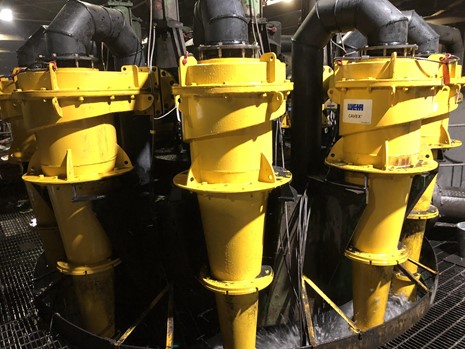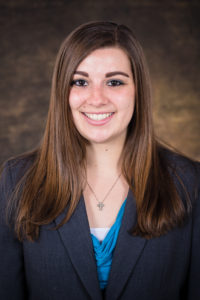Hydrocyclones (also referred to as cyclones) are an efficient way to separate slurries. With no moving parts, they depend on the feed pressure, or velocity, into the cyclone to generate a centripetal force. This centripetal force allows the cyclone to separate coarse or dense particles from fine particles.
Cyclones have four main sections: feed chamber, cone (body), underflow (spigot liner or apex), and overflow (vortex finder). The feed chamber is designed to guide the slurry into a spiral, creating a vortex. The cone (body), which can be one piece, or multiple pieces, allows the material to continue spiraling, generating a centripetal force. This centripetal force pushes the coarse material outward, allowing the fine particles and most of the water to be carried upward in a vortex.
The overflow is the top of the cyclones and is where the fine particles leave the cyclone. The vortex finder is the liner at the top of the cyclone. The underflow is the bottom of the cyclone, which is where the coarse material exits the cyclone. The spigot liner is the underflow liner. The open diameter of the spigot liner, along with the vortex finder, dictate the mass split. In addition to the vortex finder and spigot liner, the feed pressure, feed density, cone length, and cone angles all play a part in determining the separation point, also known as the D50.
There are many different applications for hydrocyclones, including classification in milling and dewatering. If you have an application or would like more information, please contact Jasper Engineering today at (218) 262-342 on (952) 938-6504 or email us at sales@jaspereng.com.
https://www.global.weir/brands/cavex/hydrocyclones/

